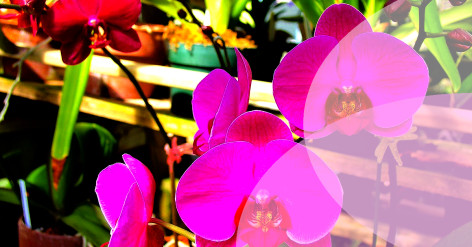How to Plan and Design a Garden for Your Home

Understanding the Ground Rules
Gardening is more than just a weekend pastime. It's an opportunity to carve out your little piece of Eden. If you've been longing for a lush, thriving garden to add a splash of life to your home, you're on the right track. Let's dig deep and learn how to effectively plan and design a home garden.
1. Knowing your soil
2. Orientation
First things first, understanding your garden soil is crucial. Why? Because the soil will dictate which plants will thrive in your garden. The Royal Horticultural Society provides a wealth of information on how to judge soil types and determine what to grow.
3. Condition of the Ground
Does your garden face North, South, East or West? How much sun does it get daily? Where's the shade? Knowing the answers to these questions can help you design the perfect garden for your home. The BBC offers a great guide on shade-tolerant plants.
Drawing Up Your Dream Garden
Is the area you want to transform into a garden flat or sloping? Sloping ground can pose a challenge but don't let it deter you - terraced gardens can be beautiful! The Royal Horticultural Society gives us another gem on gardening on a hill.
4. Design Styles
Related articles
The second part of our journey involves transforming your garden fantasies into practicable plans.
5. Drawing a Layout
Set in stone a theme or style for your green paradise. Whether it's a classic Victorian garden aesthetic or a zen Japanese-inspired landscape, a concise theme makes for a visually engaging garden.
6. Choosing Your Plants
Sketching a garden layout by hand or using garden design software - either way, having a blueprint of your dreams is important. It can be as simple or as detailed as you want it to be - as long as it's functional.
7. Adding Points of Interest
After figuring out the environment, the exciting part begins - choosing your plants! With a clear understanding of your gardenâs soil and climate, you can choose plants that are not only pretty but will thrive in the spot you have chosen for them.
- Structural Plants: Trees and shrubs give your garden structure and all-year-round interest.
- Flowering Plants: These add the pops of colour and loveliness that every garden needs.
- Edibles: Herbs, fruits, and vegetables not only take your cooking to the next level but also contribute to the aesthetics of your garden.
Gardening â A Labor of Love
Consider adding points of interest, like a garden bench under a canopy of trees or a beautiful birdbath. Or even a charming pergola. These points of interest can take your garden from lovely to âLook at that!â.
Planning and designing your garden might sound complex, but remember it's a journey, not a day trip. Gardening should be an enjoyable pastime, a way to reconnect with nature and your creative self. It isnât about perfection. Itâs about progress, growth, and cultivating connection with nature.
Plant your garden, water it, and watch it bloom along with your happiness.




